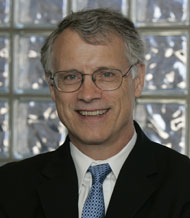 Here’s a feel-good story for Halloween: The Oregonian reports on a program out of the Lincoln County Sheriff’s Office where inmate trustees from the county jail give more than 800 hours a month to the local animal shelter. The story credits the inmates with saving the lives of countless animals:
Here’s a feel-good story for Halloween: The Oregonian reports on a program out of the Lincoln County Sheriff’s Office where inmate trustees from the county jail give more than 800 hours a month to the local animal shelter. The story credits the inmates with saving the lives of countless animals:
“It helps us tremendously,” says Sgt. Barbara Perry of the Lincoln County Sheriff’s Office, the interim shelter manager. “We have been able to reduce the amount of euthanasia dramatically because the inmates come and do a lot of the work we would normally do.
“That allows us to dedicate more time to very important programs such as fostering, second chance programs and rescue groups. Those are vital programs that we should be utilizing rather euthanizing because we don’t have space or time.”
The program seems to be a win-win-win: good for the animals, good for the county, and good for the inmates who are involved. It may lead to brighter futures for the inmates as well as the rescued dogs and cats. Duane Parton III (pictured) is taking part in the program while serving more than 200 days for not paying fines on a DUI and misdemeanor charges.
“I love animals,” says Parton, who has learned to give vaccinations and how to detect illness in the rescued canines. He’s recently decided he may take veterinarian classes when he enrolls in community college.
“I am actually glad I am in jail because I get to do this,” says the 26-year-old skateboarder. “How often do you hear that?”
Not often enough. Sounds like a great program to me. Thanks to the Oregonian for reporting on it and offering a hopeful story on second chances. Happy Halloween, everyone!

 News
News  Tim Pawlenty may have switched off the TVs at Moose Lake’s Minnesota Sex Offender Program (MSOP), but he clearly switched on public sentiment about punishment of sex offenders.
Tim Pawlenty may have switched off the TVs at Moose Lake’s Minnesota Sex Offender Program (MSOP), but he clearly switched on public sentiment about punishment of sex offenders. After weeks of feeling I had nothing interesting to say/blog about, I suddenly have several stories that I would like to comment on and invite others to respond to. I’ll start with the one that raises the most questions for me, and I’ll try to get to the others in the near future.
After weeks of feeling I had nothing interesting to say/blog about, I suddenly have several stories that I would like to comment on and invite others to respond to. I’ll start with the one that raises the most questions for me, and I’ll try to get to the others in the near future. I attended an amazing conference on employment and criminal records yesterday and could blog at length about several of the papers. My favorite moment, however, came in a discussion with Mindy Tarlow, the CEO of CEO — New York’s
I attended an amazing conference on employment and criminal records yesterday and could blog at length about several of the papers. My favorite moment, however, came in a discussion with Mindy Tarlow, the CEO of CEO — New York’s  via Katie Kaukinen: President Obama
via Katie Kaukinen: President Obama